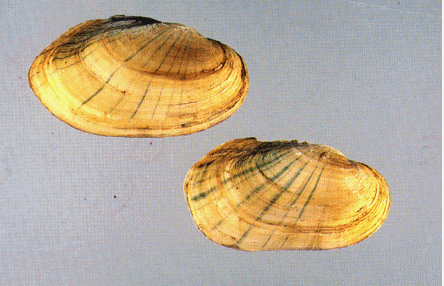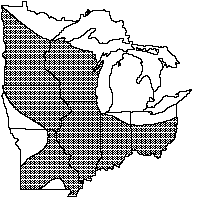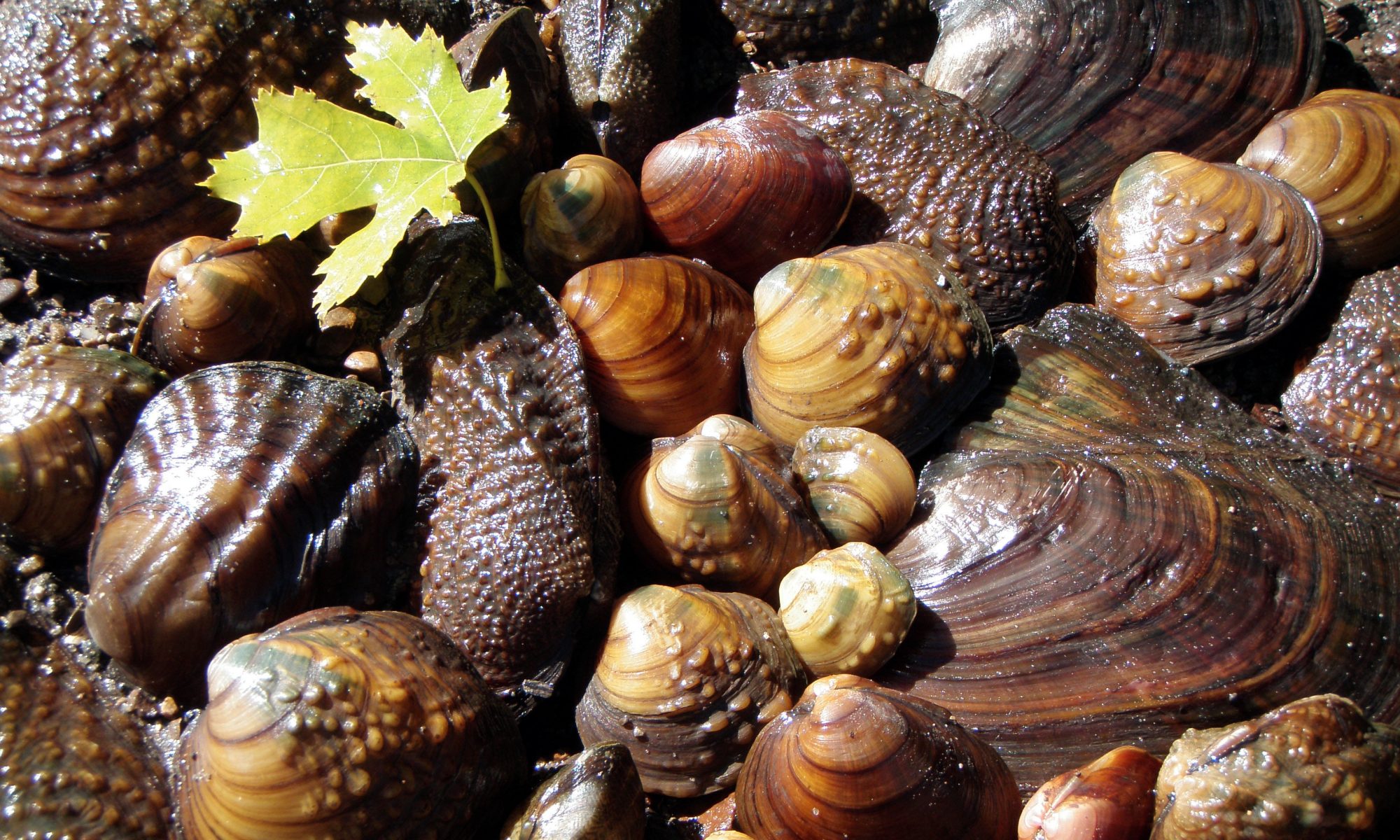Lampsilis siliquoidea (Barnes, 1823)

Other common names: Grass mucket, black mucket, pugnose mucket.
Key characters: Elongate, moderately large, and thick shell, yellow or tan with green rays; males bluntly pointed and compressed, females truncated and inflated.
Similar species: Yellow sandshell, mucket, plain pocketbook, rainbow, ellipse, pondmussel.
Description: Shell elongate or elliptical, thin to thick, and compressed (young individuals) to inflated. Anterior end rounded, posterior end bluntly pointed (males) or truncated (females). Dorsal and ventral margins usually straight. Umbos only slightly elevated above the hinge line. Beak sculpture of six to ten double-looped bars. Shell smooth, yellow or yellowish green, sometimes tan or brown, with green rays of various widths that may become indistinct in older individuals. Length to 5 inches (12.7 cm).

Pseudocardinal teeth divergent, elongated, or triangular, thin to moderately thick; two in the left valve, one in the right (occasionally with a thin, ridgelike tooth in front). Lateral teeth straight to slightly curved, moderately long, and thin. Beak cavity moderately deep. Nacre white or bluish white and iridescent posteriorly.
Habitat: Lakes and small to medium-sized streams in mud, sand, or gravel.
Status: Widespread and common throughout the Midwest.

